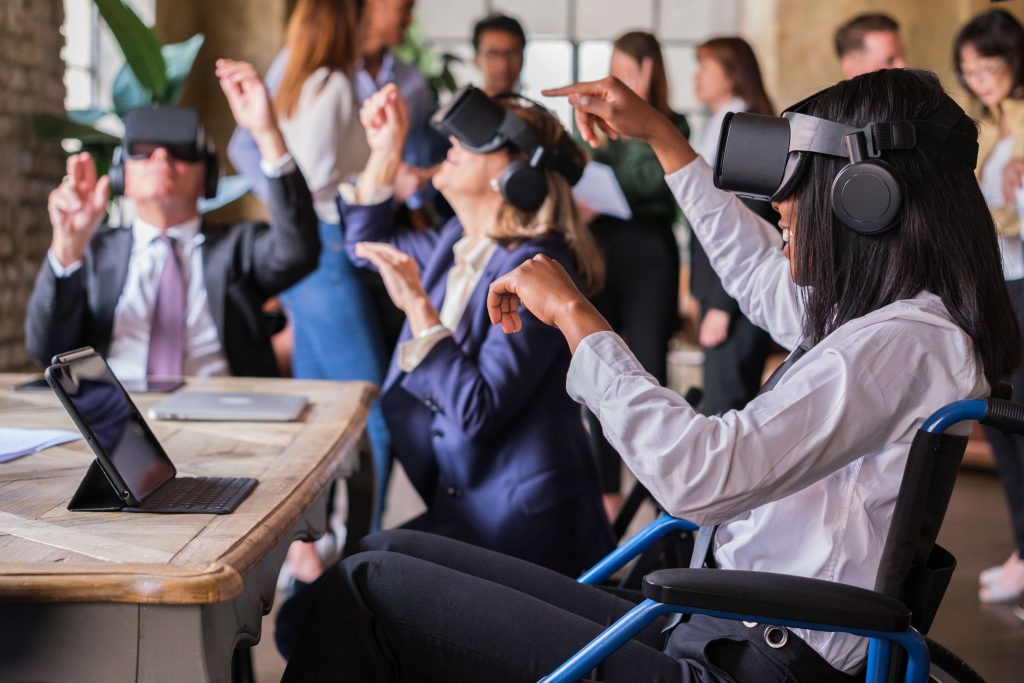
The advent of Virtual Reality (VR) has revolutionized many industries, and real estate investing is no exception. As an immersive technology, VR provides an unprecedented ability to showcase properties and engage potential buyers, reshaping the landscape of property investment.
This article will dive into the transformative role of VR in real estate investing, detailing its multifaceted applications and benefits.
Whether you’re a seasoned investor or just beginning your journey in the real estate world, understanding how VR can enhance your investment strategy is vital. Let’s embark on this exploration of the virtual revolution in the real estate industry.
VR in Real Estate: An Overview
Virtual Reality, a technology that constructs an artificial environment for users to interact with, has been steadily making inroads into the real estate industry. By using VR, potential investors can “walk through” properties, whether residential or commercial, from anywhere in the world. This virtual experience is not just limited to pre-constructed properties; it extends to properties still under construction or in the design phase, offering a unique perspective on potential investments.
Real estate professionals have embraced VR due to its capacity to enhance the buyer’s experience, offering a comprehensive, immersive view of properties that photos or videos simply cannot match. This functionality is especially valuable in today’s fast-paced world, where saving time and resources is of paramount importance.
From exploring every nook and cranny of a property to envisioning how a space might look after renovation or completion, VR brings a level of interactivity and realism to property viewing that has fundamentally altered the dynamics of real estate investing.
The Impact of VR on Property Showcasing
One of the most significant applications of VR in real estate investing lies in property showcasing. VR takes property viewing to a whole new level, allowing investors to virtually wholesaling real estate in an immersive and interactive manner. This is a vast improvement over traditional property viewings, which can be time-consuming and logistically challenging.
With VR, investors can explore a property at their own pace, revisit areas of interest, and get a true feel for the space—all without leaving their homes or offices. They can ‘move’ around the property, observe details close-up, and even view the property at different times of the day to understand how light impacts the space.
Moreover, VR can be particularly beneficial for showcasing properties that are still under construction or in the design phase. Through VR, investors can visualize the finished product, giving them the confidence to invest in projects that are not yet physically present.
Engaging Buyers with Virtual Staging
Virtual staging is another exciting application of VR in real estate investing. With this technology, empty spaces can be virtually furnished, allowing potential investors to envision how the property might look when decorated. This visual aid can be especially useful in driving investment decisions for properties that are empty or under renovation.
Unlike traditional staging, which can be expensive and time-consuming, virtual staging offers a cost-effective and flexible alternative. Furniture, decor, and even different layouts can be virtually modified with a few clicks, providing potential buyers with a personalized view of the property.
Virtual staging not only engages buyers but also evokes an emotional connection, which is a powerful factor in investment decisions. By helping investors envision a property’s potential, VR can significantly influence their perception and valuation of the property.
Advantages of VR for Real Estate Investing
The integration of VR into real estate investing carries a multitude of benefits. Primarily, VR saves time and resources. By eliminating the need for physical property visits, investors can review more properties in less time, and real estate agents can showcase properties to a larger number of potential investors.
Secondly, VR provides a more immersive and detailed view of properties. It enables investors to explore properties in-depth and understand their layout, dimensions, and overall condition. This level of detail helps investors make more informed decisions and reduces the likelihood of surprises or disappointments down the line.
Furthermore, VR allows for remote investing. Investors can evaluate and invest in properties located in different cities, states, or even countries without the need for extensive travel. This expands investment opportunities and opens up new markets that were previously inaccessible.
Moreover, VR mitigates geographical limitations. Investors can explore properties in areas they are unfamiliar with or have limited knowledge about. They can assess properties in emerging markets or areas with high growth potential without the need for physical presence.
In addition, VR enhances collaboration and communication among stakeholders. Investors, real estate agents, architects, and contractors can virtually meet and discuss property details, designs, and renovations. This streamlines decision-making processes and fosters efficient collaboration, saving time and reducing miscommunication.
Overcoming Challenges and Limitations of VR in Real Estate Investing
While VR offers tremendous benefits for real estate investing, it is important to acknowledge and address its challenges and limitations.
One significant challenge is the initial cost of adopting VR technology. Investing in high-quality VR equipment, software, and development can be expensive. However, as VR becomes more widespread and accessible, costs are gradually decreasing, making it a more viable option for real estate professionals.
Another challenge is ensuring that the virtual experience accurately represents the physical property. While VR can provide a realistic representation, it may not capture certain intangible elements like the neighborhood ambiance or the surrounding environment. To overcome this, it is crucial to supplement VR with other sources of information such as photos, videos, and thorough property descriptions.
Additionally, VR requires a certain level of technological proficiency from both investors and real estate professionals. Not everyone may be comfortable or familiar with navigating VR platforms. Providing user-friendly interfaces and clear instructions can help bridge this gap and ensure a seamless experience for all users.
Furthermore, VR relies heavily on stable internet connections and high-speed data transfer. A poor internet connection can lead to lag, buffering, or a compromised visual experience. It is important to ensure reliable internet connectivity to provide a smooth and immersive VR experience.
Conclusion
Virtual Reality has emerged as a game-changer in the realm of real estate investing. Through immersive property showcasing, virtual staging, and numerous other applications, VR offers investors a transformative experience that saves time, engages buyers, and enhances decision-making processes. While challenges such as initial costs, technological proficiency, and limitations in replicating physical experiences exist, the benefits of VR far outweigh these obstacles. By embracing VR technology and leveraging its capabilities, real estate investors can gain a competitive edge in a dynamic and evolving market. The future of real estate investing is undoubtedly intertwined with the virtual world, and those who embrace this virtual revolution will be poised for success.











